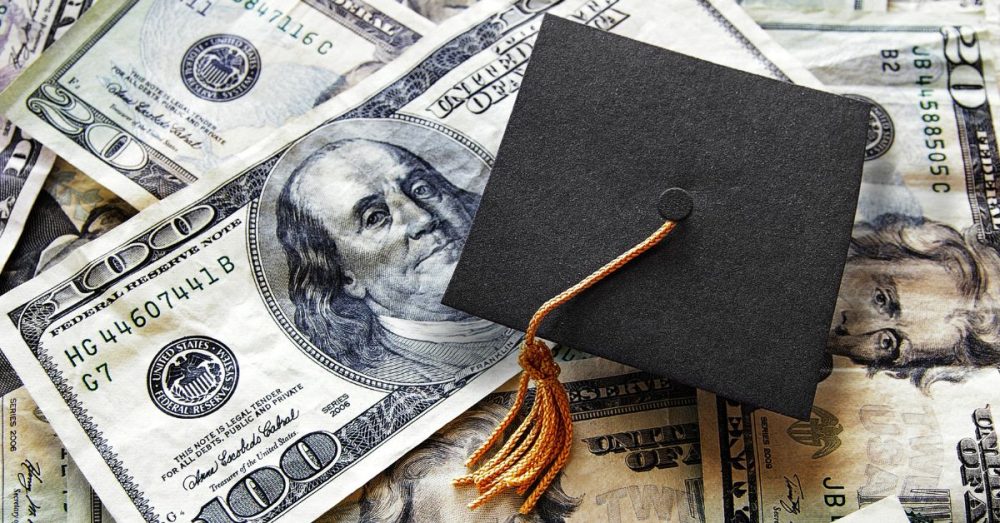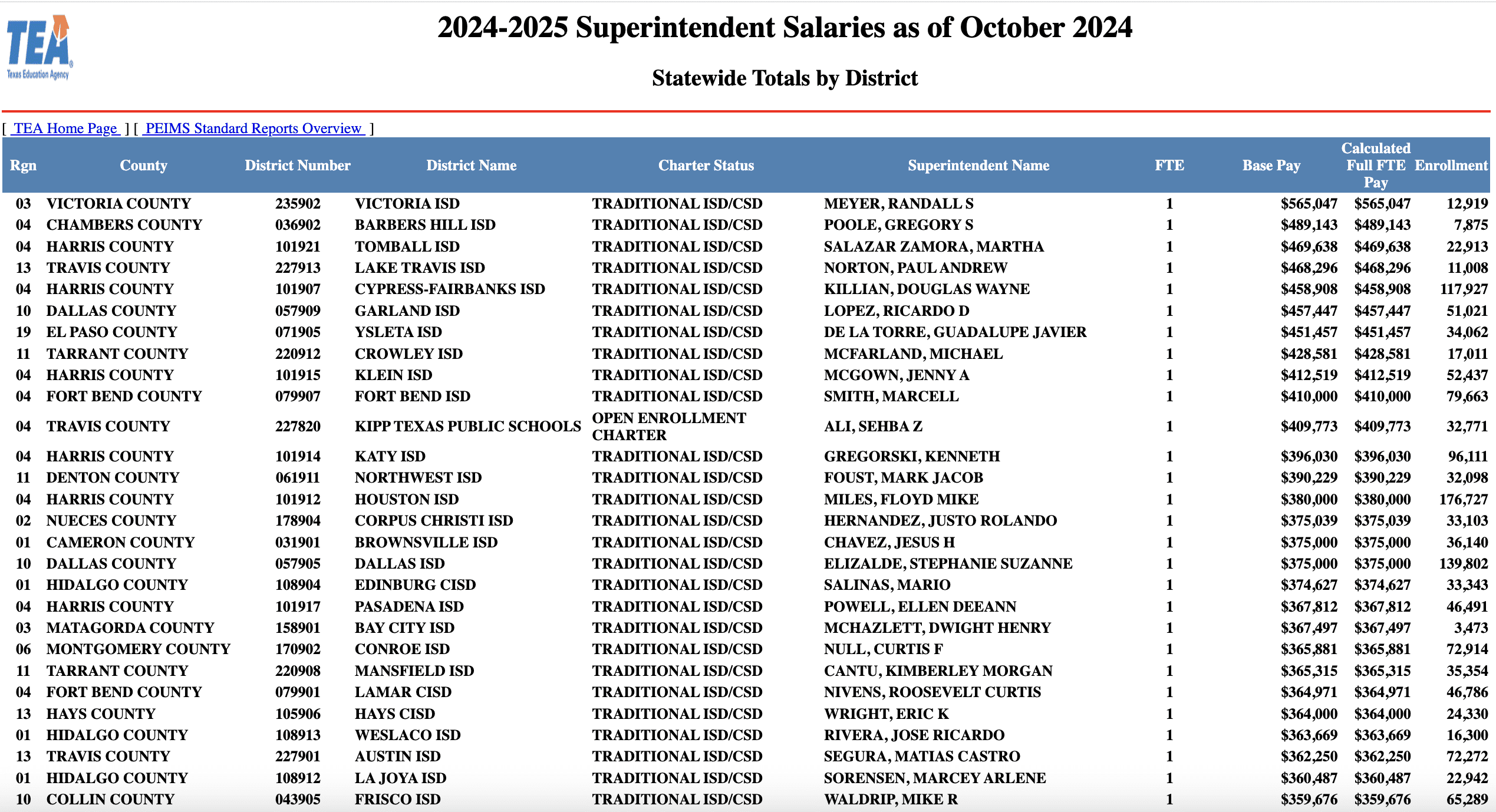(Texas Scorecard) – School superintendent salaries continue to climb in Texas, even as school officials across the state claim their districts are “underfunded.”
Newly released Texas Education Agency data for the 2024-25 school year shows 11 superintendents receive taxpayer-funded salaries that top $400,000—more than the president of the United States. Another 90 superintendents make $300,000 or more.
Those numbers are on the rise.
Last school year, eight superintendents scored salaries above $400,000, and another 81 earned $300,000 or more. During the 2022-23 school year, five superintendents received salaries above $400,000, and another 72 earned $300,000 or more. For 2021-22, 60 superintendents’ base pay was at or above $300,000.
The lucrative salaries are supplemented by benefits such as allowances for cars, phones, and housing, along with large pension contributions. Superintendents often get hefty bonuses as well.
All are provided at taxpayers’ expense.
Each superintendent’s compensation is set by locally elected school board trustees. The salaries show no correlation to the number of students enrolled in a district or students’ academic performance.
While superintendents’ salaries are rising, students’ academic performance continues to fall, leaving taxpayers to wonder if they are getting their money’s worth.
Although the TEA shows Victoria Independent School District’s former Interim Superintendent Randy Meyer at the top of this year’s list, the district hired Superintendent Sheila Collazo in December 2024 at a salary of $250,000. Another top earner, Lake Travis ISD’s Paul Norton, was allowed to resign in February following allegations of undisclosed misconduct.
Several lawmakers have proposed measures to cap superintendent salaries, including limiting them to twice the annual salary of the district’s highest-paid classroom teacher and restricting them to no more than the governor’s salary, currently $153,750.
Advocates for government education have argued that Texas schools are underfunded. Critics argue that total funding per student has increased, but school officials are failing to spend taxpayer funds wisely.



